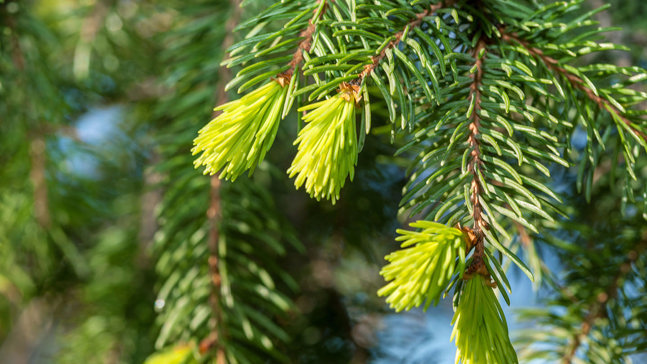
Credit: AY Images / Alamy Stock Photo
Leaves
Needle-like leaves are square-shaped and pointed, with fine, white speckled lines and a rich, sweet smell.
Festive, useful, squirrel food. Made popular by Prince Albert, Norway spruce is a familiar non-native, with friendly winter colour and a value to native wildlife.
Common name: Norway spruce
Scientific name: Picea abies
Family: Pinaceae
Origin: non-native
Norway spruce is a fast-growing evergreen conifer which can reach 40m and live for up to 1,000 years. They are tall and straight and of a triangular appearance, with a pointed crown. The young bark is a coppery grey-brown and appears smooth, but is rough with papery scales. Mature trees (over 80 years old) have dark purple-brown bark, with cracks and small plates. Twigs are orange-brown, grooved and hairless.
Look out for: long cones which hang down from the tree and have overlapping scales with jagged tips.
Identified in winter by: its evergreen leaves which are present all year round.

Credit: AY Images / Alamy Stock Photo
Needle-like leaves are square-shaped and pointed, with fine, white speckled lines and a rich, sweet smell.
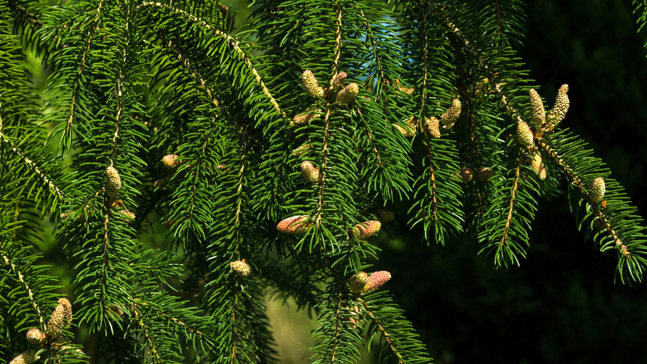
Credit: Brian Gadsby / Alamy Stock Photo
Male flowers consist of clusters of stamens, which turn from red to yellow in spring when laden with pollen. Female flowers are red, upright and oval, and tend to form at the top of the tree.
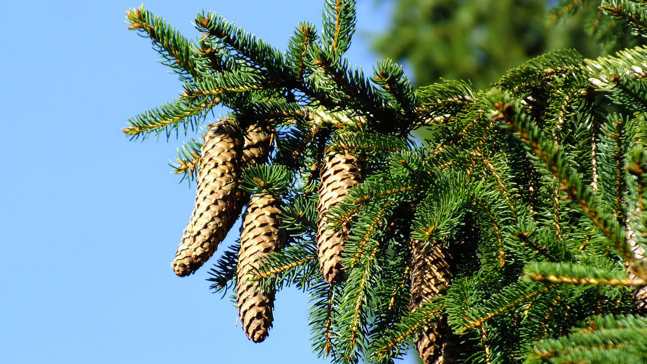
Credit: Visharo / Alamy Stock Photo
Once pollinated by wind, female flowers turn green and enlarge to become red-brown cones with diamond-shaped, rounded scales. Seeds are released in spring.
Sitka spruce (Picea sitchensis). Norway spruce needles are diamond-shaped in cross section and softer than Sitka spruce needles.
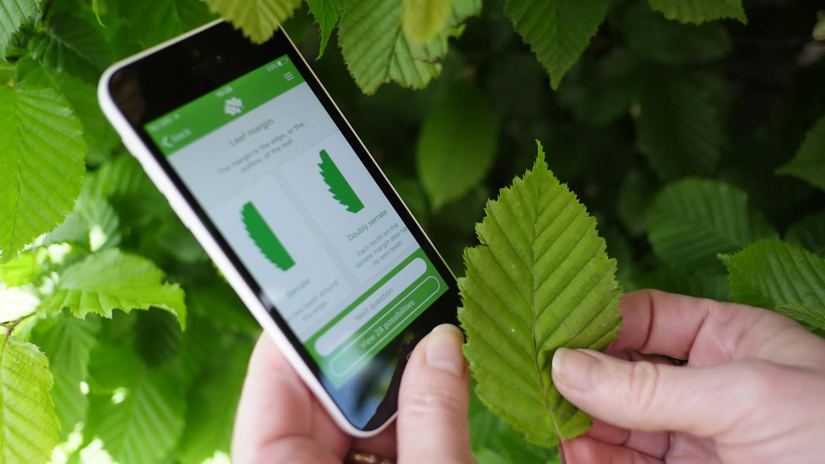
Download our free Tree ID app for Android and iPhone to identify the UK's native and non-native trees. It's an A-Z tree guide in your pocket.
Download the appNorway spruce is widespread in the UK, having been planted for forestry in the 1800s. It is native to mountainous areas of Europe and was originally from Scandinavia.
It is thought the Norway spruce was native to the UK in the last interglacial period, and records show it was re-introduced as early as 1548.
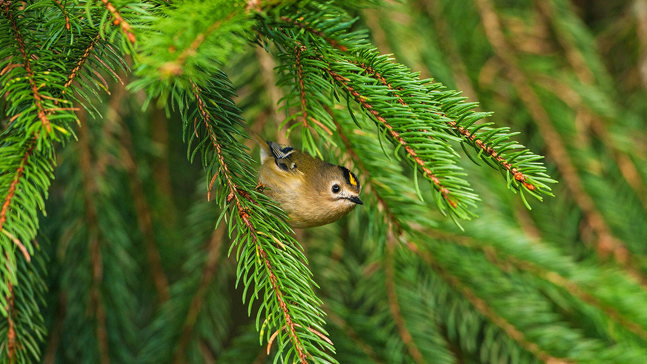
Credit: Mike Read / Alamy Stock Photo
Norway spruce trees provide a habitat for a variety of wildlife, including beetles, weevils and hoverflies. The caterpillars of a number of moth species feed on the foliage, including the spruce carpet, cloaked pug, dwarf pug and barred red. The cones are eaten by red squirrels.
In Greek mythology, the spruce is devoted to Artemis, goddess of the hunt and the Moon.
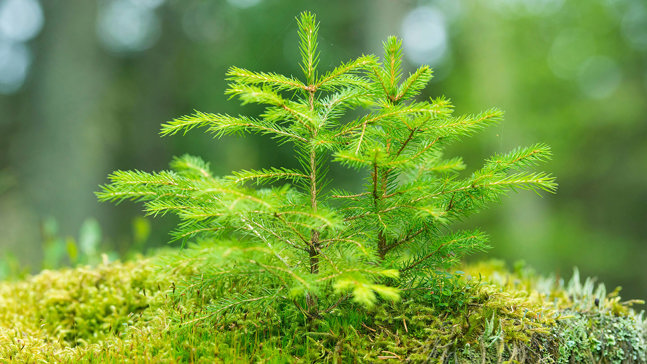
Credit: ImageBROKER / Alamy Stock Photo
Timber is a pale cream and is strong with a straight grain and a fine texture. Since the 1800s, it has been grown to produce timber for joists, rafters and flooring, furniture and boxes, and to make paper. Norway spruce is also grown widely and used as a decorative Christmas tree.
Norway spruce can be susceptible to green spruce aphid, as well as a variety of fungal diseases.
The widespread use of the Norway spruce as a Christmas tree is down to Prince Albert, husband of Queen Victoria. In 1841, he introduced an old German custom of decorating a spruce tree with candles. Since then, the Norway spruce has been used as a Christmas tree across Europe.

Shop
We have single trees and tree packs to meet your needs, from wildlife to woodfuel. Delivery is free.
External link
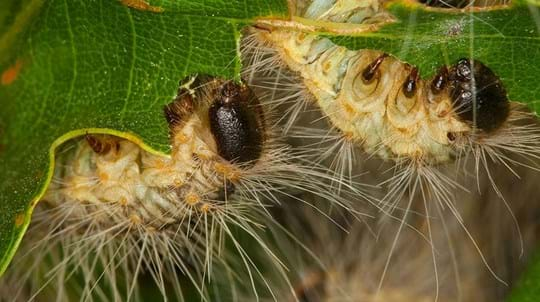
Trees woods and wildlife
Learn more about the pests and diseases threatening our trees. Find out how to spot them, the symptoms and outlook, and how you can help.